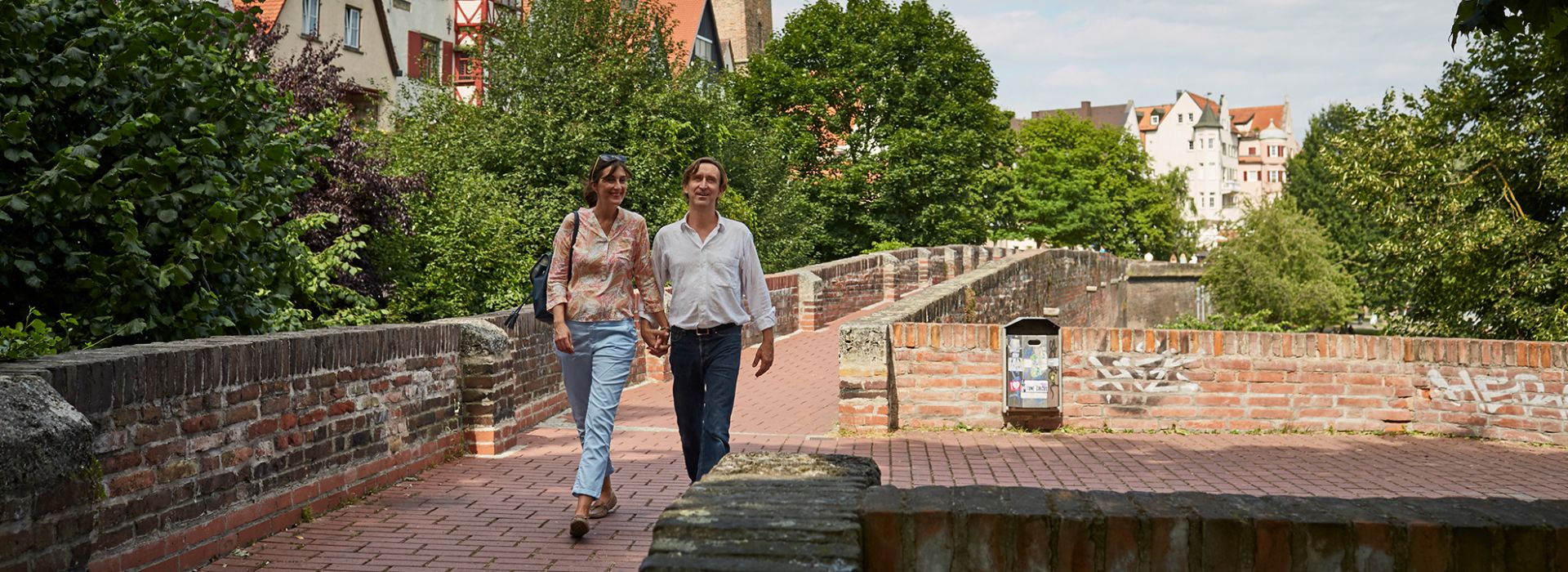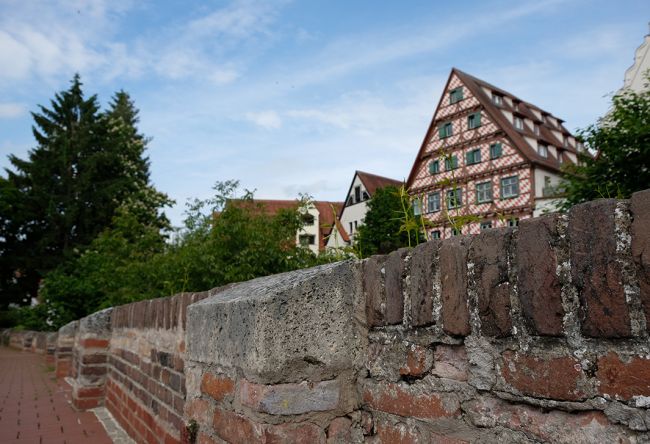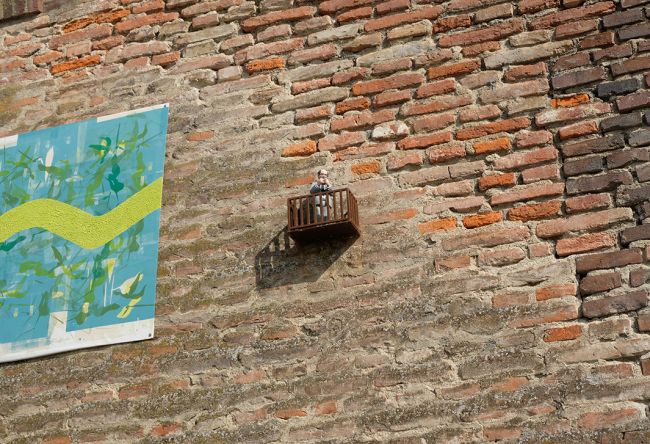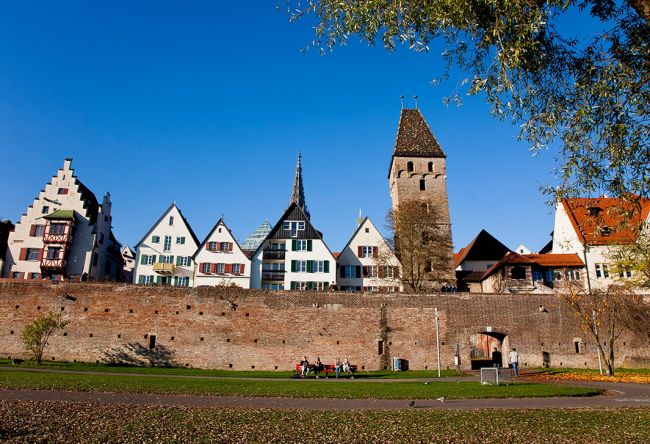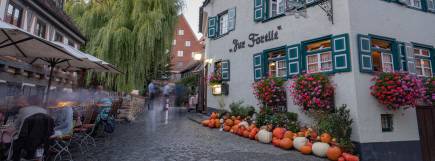Iron rings can still be seen in the city wall looking onto the river Danube. They are an indication that this was once located directly on the river.
A walk on the city wall is a must for Ulm explorers. There is much to see in the middle section, beautiful gardens on the one side and, on sunny days, the much frequented Danube meadow on the other. This stomping ground for hanging out and recreation is a stroke of luck for the city with its central location, as well as attracting both young and the young at heart.
A comparison of today´s city view with that of 1493 from the famous Schedel world chronicle, reveals what has changed since then. For example, there was no trace of a meadow. The city wall that was erected shortly before 1480, stood directly on the river at that time. An eye witness tells us that it was built ›in the most rapid current of the Danube‹. The seemingly obsolete rings were used to moor boats. So the meadow is alluvial land.
It is also noticeable that the towers - except for the Metzgerturm - are missing today. Napoleon is to blame for this. In the year 1800, he commanded that the fortification be demolished. Only the lower part of the wall was allowed to remain as flood protection, but not its higher wall-walk. Even the 38-metre high ›thick tower‹ has shrunk. An octagonal wall projection with benches is all that remained of it.
But the fact that even the entrance gate (close to Fischerplätzle) on the wall fell victim to demolition, can be blamed on the people of Ulm themselves. As a result of its narrow passage, it literally stood in the way of a bourgeois zeitgeist phenomenon dating from the 19th century: the emerging fashion of sauntering. An early ›citizens' initiative‹ was able to enforce its demolition with a petition campaign in 1843, with limestone in the brick wall being all that is left.
Address
Stadtmauer Ulm
Entlang des Ulmer Donauufers
89073 Ulm
